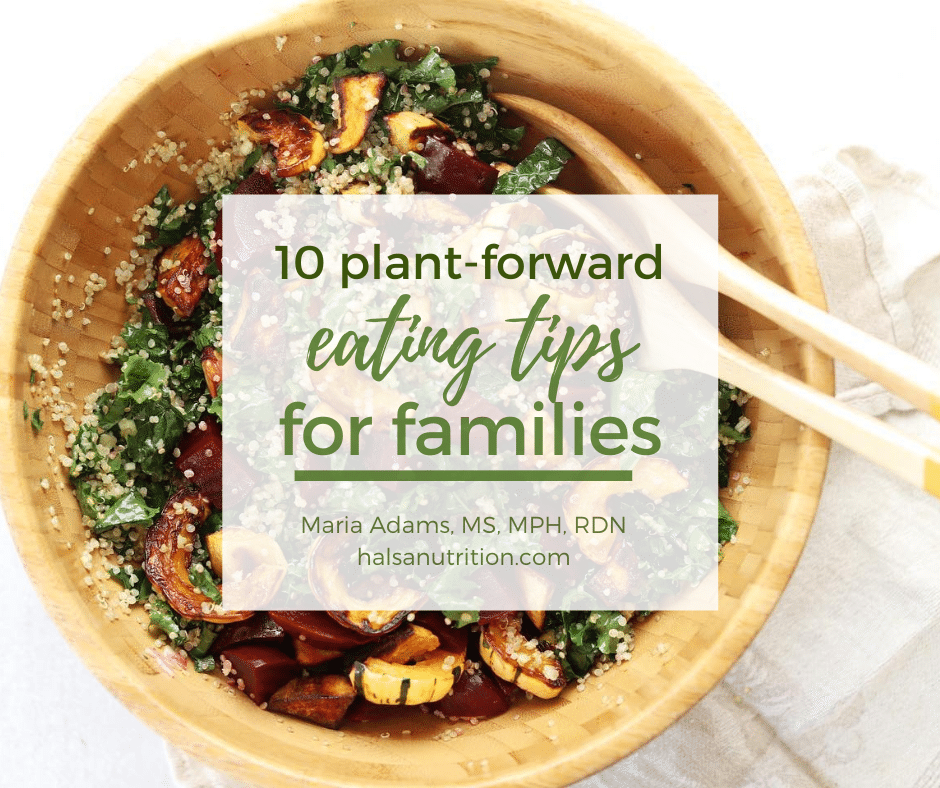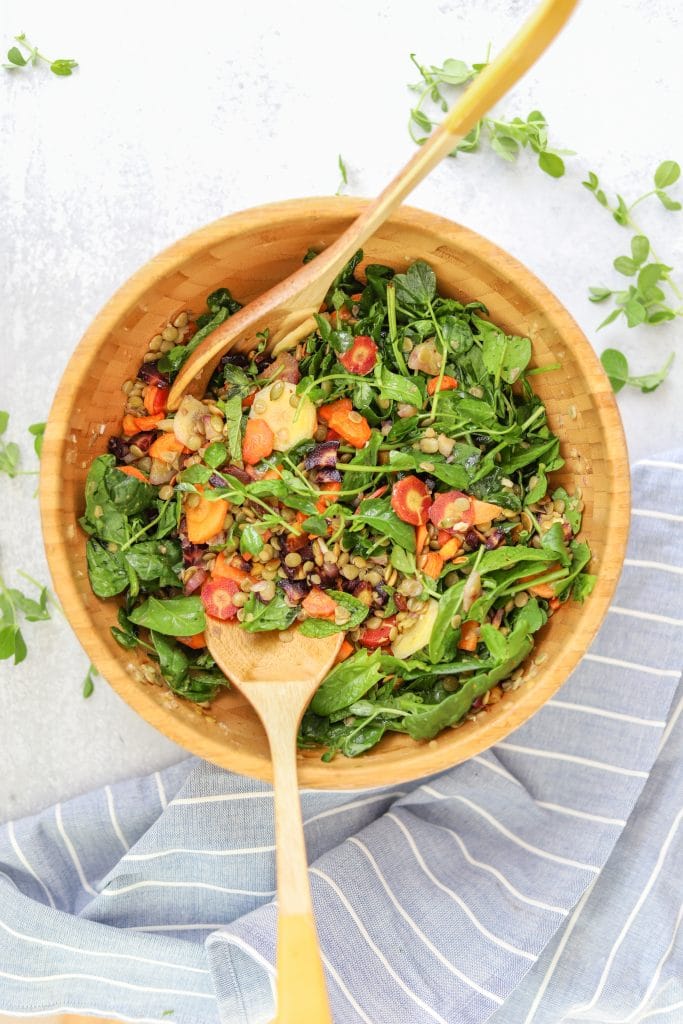
10 Simple Plant-Forward Eating Tips for Families
Eating plant-forward doesn’t mean you have to cut out meat. It means making plants more of the focus! Here are some simple ways to shift your family’s eating style to be more plant-forward.

Eating a more plant-forward diet is good for us and good for the earth. So how can you get your meat-loving family on board?
Well, first of all, know that plant-forward doesn’t mean you have to give up meat or dairy, it simply means you are prioritizing plant-based foods. Plant-based foods include veggies, fruit, grains, legumes, nuts, and seeds.
This means that your eating pattern will consist of a variety of meals. Some may be vegan (100% plant-based), some may be vegetarian (plant-based but with the addition of dairy and/or egg, and some may be plant-forward (most of the plate filled with plant-based foods). However, because we are looking at the overall pattern of eating (look at foods eaten over a week or month versus just a day), there is also room for the meals that may be traditional (more emphasis on meat).
The plant-forward eating pattern has room for all types of food. This is good since the reality is it’s always good to be flexible in your eating approach. (Avoiding rigid rules or restrictions is a key component of intuitive eating.)

To help get your family on board, here are 10 strategies you can incorporate.
10 Simple Plant-Forward Eating Tips for Families
- More colorful breakfasts – Challenge your family to include a fruit and or vegetable at breakfast time. You can help by slicing and rinsing fruit and putting it out. Additional ideas include adding veggies to omelets, making smoothies, and serving egg sandwiches with greens like arugula.
- Use plant milk or yogurt in your recipes. Make pancakes, waffles, muffins, and banana bread using plant milk instead of dairy milk. Or try a combination of dairy and plant-based ingredients. Remember, little changes add up.
- Meatless lunches – Incorporate more meatless lunches into your week. Ideas include veggie chili, lentil salads, and grain bowls. If your family loves meat-filled sandwiches simply up the ratio of veggies to meat.
- Veggies first at dinner – Have a hungry family? A tip I learned from Stephanie Meyers, MS, RD, LDN, is to get the veggies on the table first. Then, let your family dig in as they wait for the rest of the food to be ready. Without the competition of their favorite chicken, chances are they will eat more veggies.
- Reverse plating – Many of us have grown up with the standard “meat and potatoes” dinners where veggies are an afterthought. Challenge yourself to first plan what veggies you will have, then choose a grain/starch, and finally, a protein source. Think of the veggies as the “main dish” and the meat as more of a side or condiment.
- Visualize meals using the “plate method”. Aim to make 1/2 of the plate fruits and veggies, 1/4 grains and starches, and 1/4 protein. The Canadian food guide provides a nice visual. (Note: let your kids serve themselves, and decide on their own how much of each food they want.)
- Add more plant-based protein options to the table. While most vegetables and grains provide some protein, edamame, tofu, soy milk, lentils, beans, peas, nuts, and seeds are especially good sources. The best way to get your family to like these foods? Put them out on the table and let them gradually familiarize themselves in a no-pressure way. Incorporating these foods into tasty, already loved recipes is a great idea, but just make sure you are upfront about it–“hiding” new or disliked foods usually backfires in the long run!
- Serve salads with most dinners. Serving a salad with dinner is a simple way to help meet that “half-plate veggies” goal. Leave the dressing on the side so that everyone can dress it how they like and the leftovers keep better.
- Join a farm share. CSA’s are a fun way to get a variety of veggies every week while also supporting local farmers. Check out this article for tips on using all your CSA veggies.
- Waste less food. Keeping a well-organized fridge will help you see all those veggies instead of letting them wilt in the back. So take time every week to clean it out and make a plan to use forgotten produce. This will also help you save money and minimize waste!

Bonus suggestions:
Because I couldn’t resist adding a few more suggestions. Bonus ideas include:
- trying a vegetarian restaurant,
- seeking out plant-forward bloggers for inspiration, and
- stocking your freezer with plant-based foods such as veggie burgers, sweet potato fries, peas, pre-cooked brown rice, and frozen fruit for smoothies.
Finally, for more personalized recommendations, consider meeting with a Registered Dietitian. This can be especially helpful if you have concerns about how your kids are eating or feel overwhelmed.
Leave a Reply